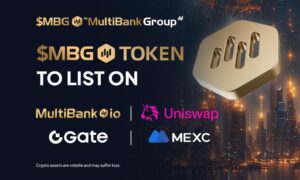Cryptocurrencies come with many revolutionary features, with some of them being — a borderless monetary network, true ownership of assets, and impregnable security layers. But the one feature that sets crypto apart from the rest of the pack is a limited supply. You see, in the traditional financial system, the governments decide whether to print more money or not. So, there is no scarcity attached to fiat currency, and it continues to get devalued as more money is pumped into the economy.
In the case of blockchains, we have the power to set a limited supply of tokens and operate in a deflationary environment. This is also why bitcoin is treated as a safe haven asset. It has a fixed supply of 21 million. And according to basic supply and demand dynamics, the value of BTC increases significantly over an extended period of time, given mass adoption takes place.
Similarly, as we have the power to create a limited supply, we also have the power to destroy tokens and get in return the same form of value — high demand. This is called token burning or buyback mechanism.
Why Crypto Protocols Decide to Buyback & Burn Tokens
Burning tokens essentially means sending them to an address with no private key. As you can’t access and move those tokens, they will be permanently removed from the circulation supply. Crypto protocols incorporate such a mechanism to increase the value of the native token and impose a deflationary effect on the total supply.
It is a lot similar to stock buybacks. When a company turns profitable and accumulates loads of cash, they look to reduce the supply of shares available in the market by buying their own shares. This leads to a supply crunch, thus, increasing the value of the stock. In crypto, projects offer buybacks as a feature to attract more investors and users.
For example, the largest cryptocurrency exchange in the world, Binance, committed to removing 100 million BNB tokens from the total supply. The exchange uses 20% of the quarterly revenue to buy back tokens and burn them to raise the price of BNB. Recently, Binance completed their 18th BNB burn, removing a total of 1,684,387 BNB tokens.
A similar deflationary effect is also impacting the Ethereum blockchain network. When London hardfork was launched on August 5th, 2021, the blockchain immediately started burning ETH. To date, the value of ETH burned is over $5 billion. Though this doesn’t make Ethereum deflationary, it does impact the price and demand of the coin.
Another reason to implement a burning mechanism is to stabilize token value. A project like Olympus DAO that owns its liquidity and works based on the value of reserve assets needs to constantly change the supply of its native token, OHM. When the value of OHM is more than the reserve’s market value, then more tokens are minted. Conversely, when the value drops, the protocol burns equivalent OHM tokens.
How Does MidasDao Approach Token Burning
MidasDAO is an automated treasury growth protocol that offers users DeFi-as-a-service and gives them consistent returns through multi-chain yield farming strategies and investments across P2E and metaverse market sectors.
Users can purchase yield-generating NFTs called THRONE nodes and receive returns in the form of buybacks. When a user buys node NFTs, the protocol burns 75% of the tokens spent, and they are rewarded based on node tiers. As Midas is a fork of Olympus DAO, it also has to rebase the token supply. This will impact the yields while the node rewards stay the same.
Even in the event of a market crash, MidasDAO implements a buyback and sell tax to preserve the value of treasury and protect token holders.
Token Burning/buybacks the Only Way to Beat Network Inflation?
The value of digital assets comes down to supply and demand. And when the demand is drying up, one way to increase it is by reducing the supply through buybacks and token burning mechanisms. In a way, it’s like self-investing and hoping the value of the business goes up. It is evident that more protocols will adopt such a strategy when they feel their native token is undervalued and allow the market to decide its correct valuation.

































